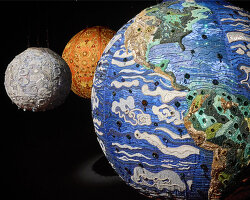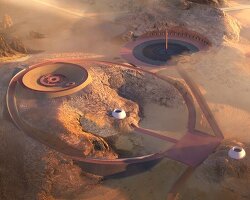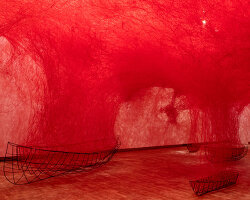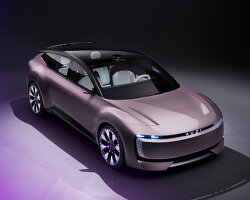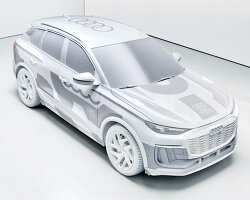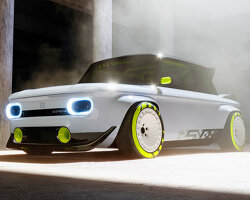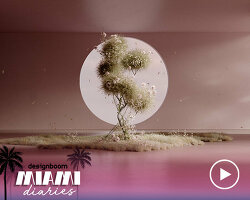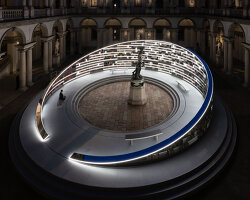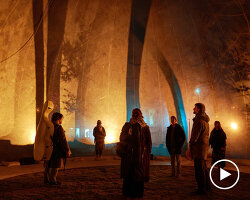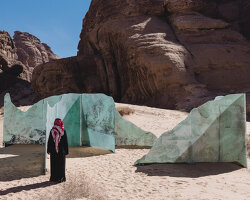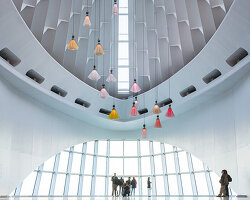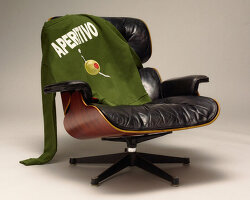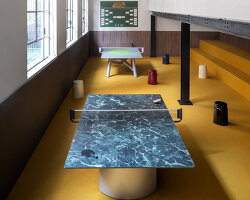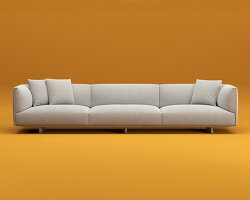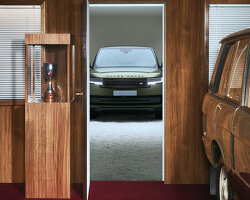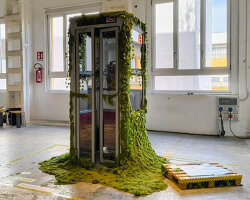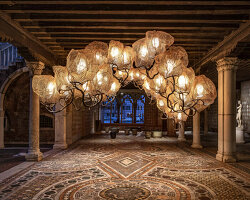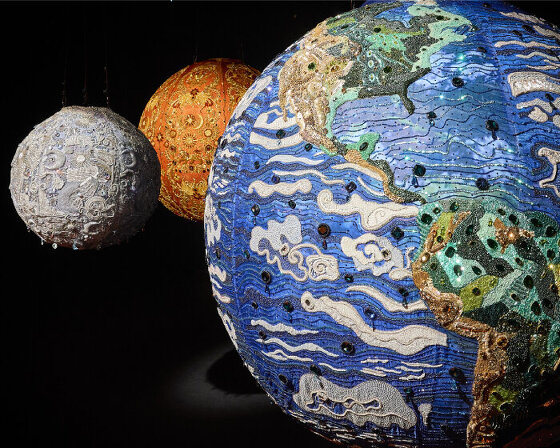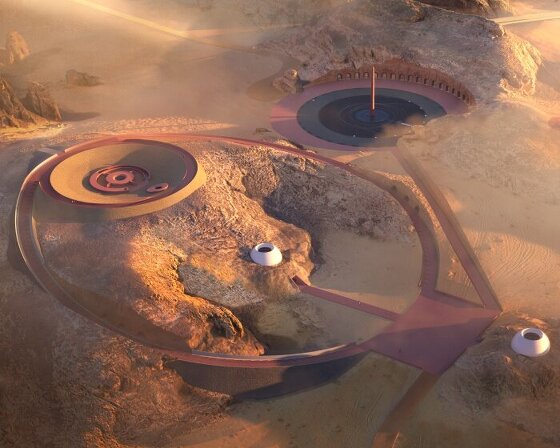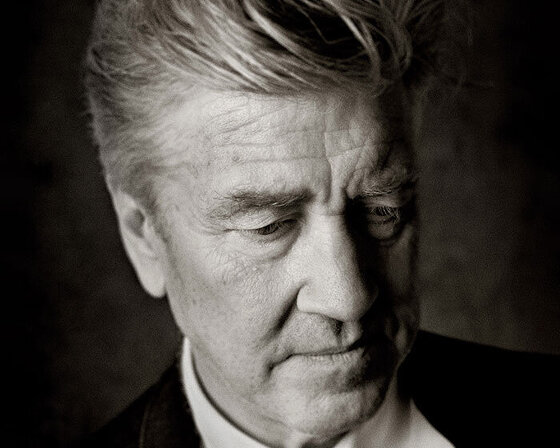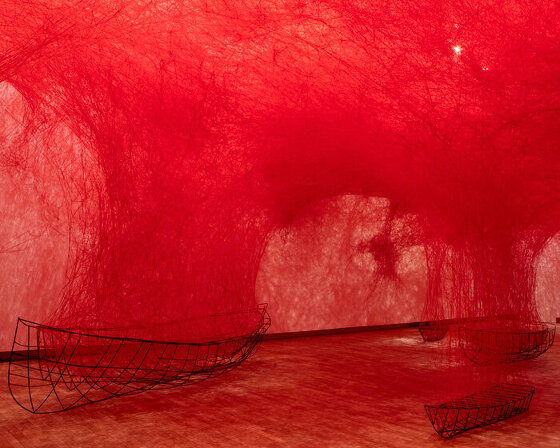drift us: an immersive kinetic landscape
Returning to Milan Design Week after ten years, Dutch artist duo Lonneke Gordijn and Ralph Nauta of DRIFT once more redefine how movement, environment, and technology intersect. In collaboration with Audi, their latest installation, Drift Us, unfolds in the peaceful courtyard of the Portrait Milano Hotel. The work forms an immersive robotic landscape where kinetic bulbs sway in response to visitors’ movements, mimicking wind in a field of grass. Like much of DRIFT’s work, this luminous project is grounded in natural phenomena, yet engineered through complex design systems where organic and synthetic experiences meet.
While each softly glowing ‘bulb’ may evoke the image of an onion or seed, their design is informed by functional necessity. ‘Inside the bulbs on the floor, there are three weights,’ Gordijn tells designboom during a visit to the Audi House of Progress during Milan Design Week 2025. ‘These weights move in and out of balance. It’s how the installation moves — with a physical imbalance.’ The entire structure is powered by custom motors, sensors, and software designed in-house by DRIFT, underscoring their hands-on approach to fabrication. As Nauta notes, ‘Everything you see is custom — from the PCB to the hardware to the robotics. Even the weights are cast by us.’ The result is a field of ethereally swaying forms, each individually responsive but united in rhythm. It’s a choreography of imbalance engineered to feel entirely natural.

images courtesy of Studio DRIFT | all photos by Ronald Smits, unless stated otherwise; video © designboom
a choreography of sensory rhythms
Rather than just mimicking natural behavior at the Audi House of Progress during Milan Design Week 2025, Drift Us becomes a site where nature is re-enacted through computation and material innovation. Each bulb, sheathed in a specially woven nylon textile developed over two years by DRIFT in collaboration with the Textile Museum in Tilburg, responds to invisible currents of human presence. ‘People that move through the installation affect the bulbs as if they were the wind,’ Gordijn explains. ‘We want people to feel that they are a force of nature moving through this environment.’
The artists‘ spatial strategy is innately architectural in how the installation builds a physical language through light, motion, and emotion. The field of bulbs orchestrates a sensory flow that connects one body to another. ‘When you gather in a space like this, you start moving with the piece,’ says Nauta. ‘Then automatically, your heartbeat almost adjusts to that rhythm.’
DRIFT’s vision taps into the innate rhythms that connect us. ‘Calm is our normal state of mind,’ Gordijn reflects. ‘We use these environments to evoke a physical response in people. It happens automatically.’ That ethos will soon find a permanent home: later this year, DRIFT will open their long-anticipated museum in Amsterdam. The largest single-artist museum in Europe, it is set to extend the artists’ inquiry into how technology, nature, and collective rhythm can shape both built environments and shared emotional landscapes.
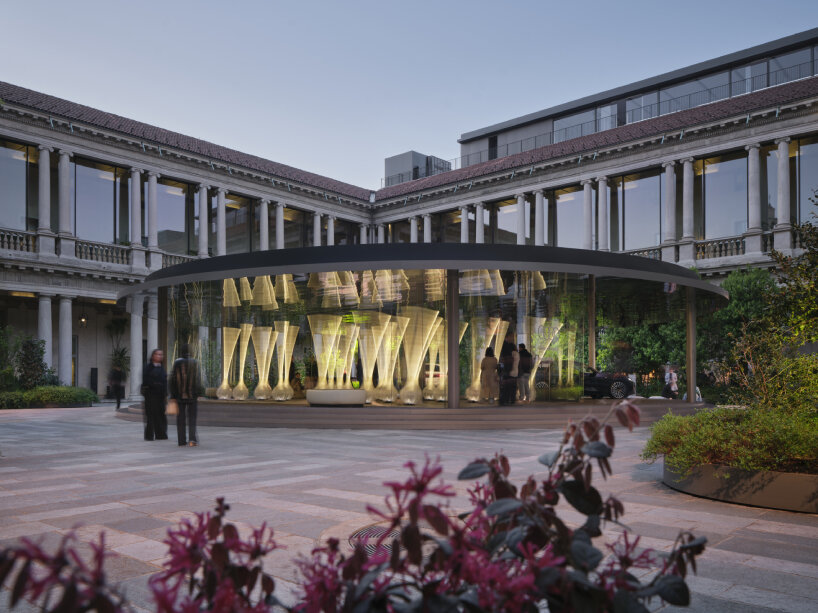
the installation, Drift Us, unfolds in the peaceful courtyard of the Portrait Milano Hotel
a dialogue with drift during milan design week 2025
designboom (DB): It’s so nice to be here with you at this immersive installation — it’s very interactive as well. The first thing that I noticed is the shape. I’m wondering where you got the design inspiration because when I first saw it, it reminded me of an onion!
Ralph Nauta (RN): We get that a lot!
Lonneke Gordijn (LG): It does look like onion, it’s true. We focused on the wind in the grass, and we needed a way to move the grass. The first idea was just slim poles with strings. But the way this moves is all about balance and imbalance. Inside the bulbs on the floor, there are three weights These weights move in and out of balance. It’s how the installation moves — with a physical imbalance, and we needed a way to contain that. It’s shaped as some kind of seed, although it’s not literally one thing that we mimic. Our inspiration is always nature.
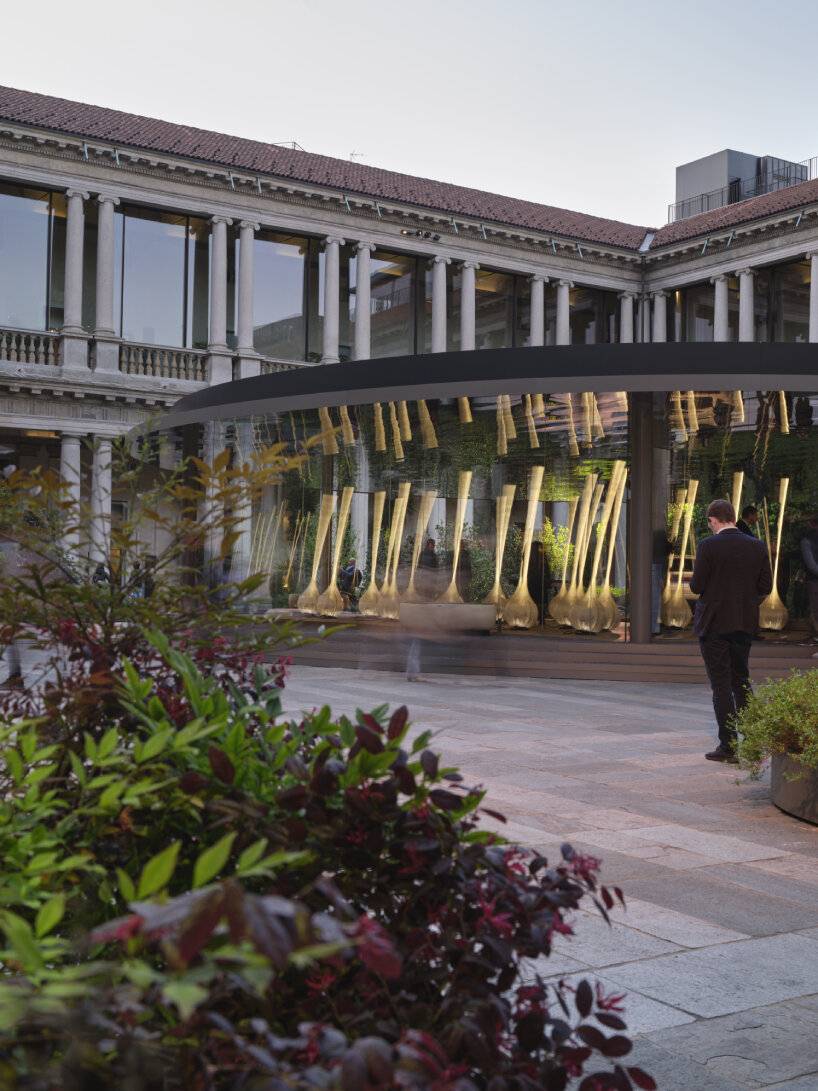
the work forms an immersive robotic landscape
RN: Its shape is informed by its function. This outcome is created from the need for the space for the weights to move, and trying to find the most aesthetically logical shape. The ‘tail,’ as we call it, goes over the bowl in a very elegant way.
LG: We choose the materials for their translucency because we work with lights inside.
RN: And the material is created by us. It’s not something that you can buy.
LG: We developed it over about two years, together with the Textiel Museum in the Dutch city, Tilburg. It’s one piece of woven nylon fabric that is applied over the bulb. Toward the top it’s pleated and less translucent. Towards the bottom of the bulb, it branches out and has more transparency. This is how we drift through a process and how we find the form and the result.
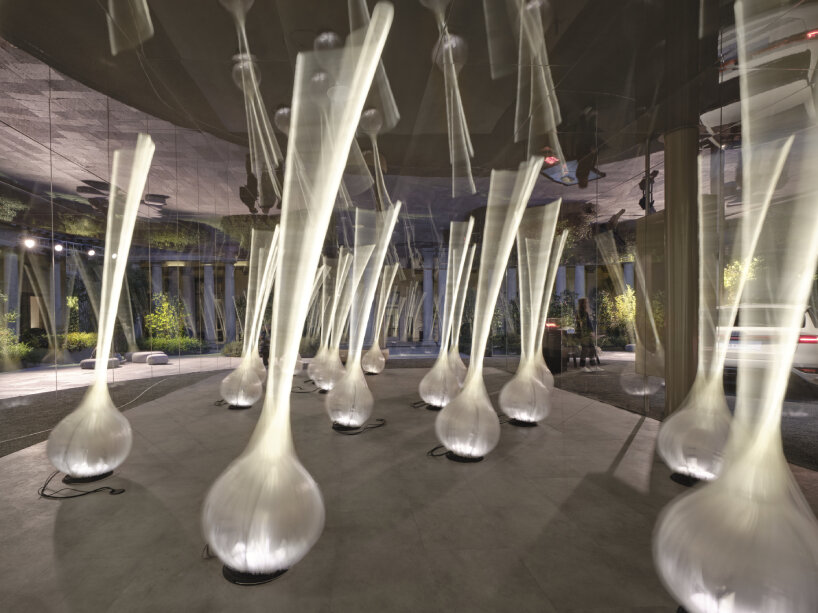
kinetic bulbs sway in response to visitors’ movements
DB: Can you speak about the materials and how these bulbs were built?
RN: Everything you see is custom — from the printed circuit board (PCB), the hardware, the software, and the robotics. Even the weights that are moving within the piece are cast by us. It sets us apart from most artists. We really develop everything from scratch.
LG: And besides the physical objects, we have developed a software whereby we actually play with the wind. And so people that move through the installation affect the bulbs as if they were the wind. We want people to feel that they are a force of nature moving through this environment. We want to transport people to a different place and have, in that sense, a different experience of an environment.
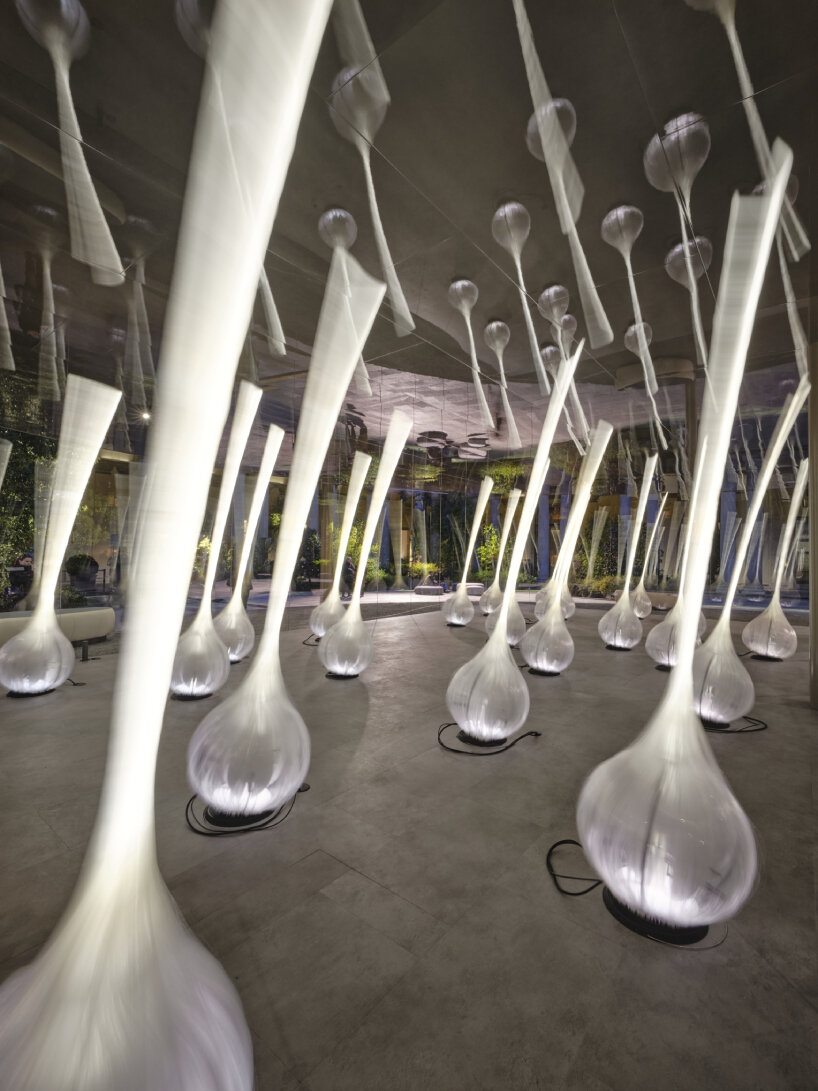
the movement mimics wind in a field of grass
DB: One of your signatures, design-wise, is your use of light. We can see it here in this installation. I see that the color of the bulbs’ lights is different from those of the ‘tails.’ Is there an intentional decision behind these two types of light?
LG: Yes! We often work with color, but always in a very soft and deliberate way. We chose only colors that blend together elegantly and softly.
DB: How do these weights work? How the bulbs are powered?
LG: There are three motors inside each bulb — every weight has a motor, and these are powered by a wired connection. The communication, meanwhile, is wireless.
RN: It’s the physical displacement of weight that creates movement. That was also the main challenge of creating this. We could have installed it on a spindle that could pivot and rotate, but then you’re just mimicking natural behavior. This is actual natural behavior. We also have to calculate the counterbalance, because if you go in one direction, it will automatically have a feedback on the other side. But if you want to counterbalance to the other way, it needs to move in a specific order to stop in the right position. So we had to solve it as a mathematical problem.
LG: The bulb’s movement reacts to imbalances of the three weights. If one weight moves outward, that side of the bulb actually becomes more heavy and the balance shifts. But once another side becomes more heavy, the bulb turns accordingly. And if two weights move out, the bulb moves in another direction. So with these weights moving in and out, we can create smaller and larger movements in all different directions.
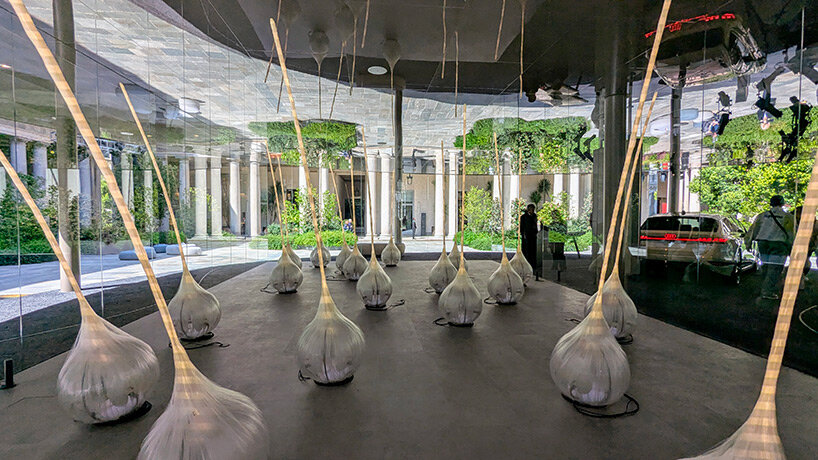
Drift Us, Audi House of Progress, Milan Design Week 2025 | image © designboom
DB: How are the weights coordinated?
LG: They communicate with our system. So when people walk among the installation, they interact with sensors throughout the system. And as you activate it, it is read as different types of ‘wind.’ It creates a choreography that is very calming. But some movements might trigger more of a ‘storm,’ where the colors become more vibrant, the ‘wind’ is more intense, and the bulbs moves faster. It mimics gusts of wind moving through the space. So the bulbs do not move all at once. They each move a split-second apart from each other, and together it’s like a soft wave.
DB: Ralph was discussing how he perceives movement, and how he was influenced by the winds of the Netherlands. What is your perception of movement in general?
RN: Movement is very important in our work in general — it’s a translation of energy. You can bring people into a certain state of mind by surrounding them with a specific movement. It can be stressful, or it can bring us in tune with each other.We’re experimenting with that a lot. Even the museum that we’re building now in Amsterdam — it will be the largest single art museum in Europe — it’s only about that.
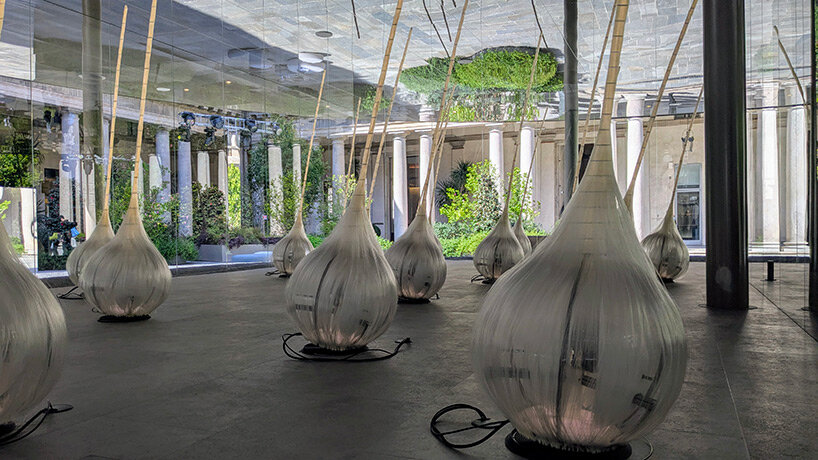
Drift Us, Audi House of Progress, Milan Design Week 2025 | image © designboom
RN (continued): It’s about bringing each other in a certain rhythm, a natural flow that can connect us and bind us together. When you gather in a space like this, you start moving with the piece. Then automatically, your heartbeat almost adjusts to that rhythm. Your whole personality becomes part of that rhythm. That’s how you can actually start communicating with the people next to you because you’re all in sync.
LG: Our bodies naturally respond to an environment. If someone is very high-energy, you can also get very high-energy — or you step away. You respond. So we use this environment to evoke a physical response in people. It goes automatically. We deliberately use very calming rhythms because naturally, our bodies want to move towards calmness. Calm is our normal state of mind. Constantly, all day long, we’re seeking to be in our natural state of mind.
There are all sorts of forces that drive up the energy. But ultimately what we need is this constant calm. What Ralph said about these movements, they trigger something in us and lead us to a different state. But if it happens to me, it happens to you. We are getting on the same wavelength, and suddenly we can communicate much easier. And we discovered that through making these artworks.
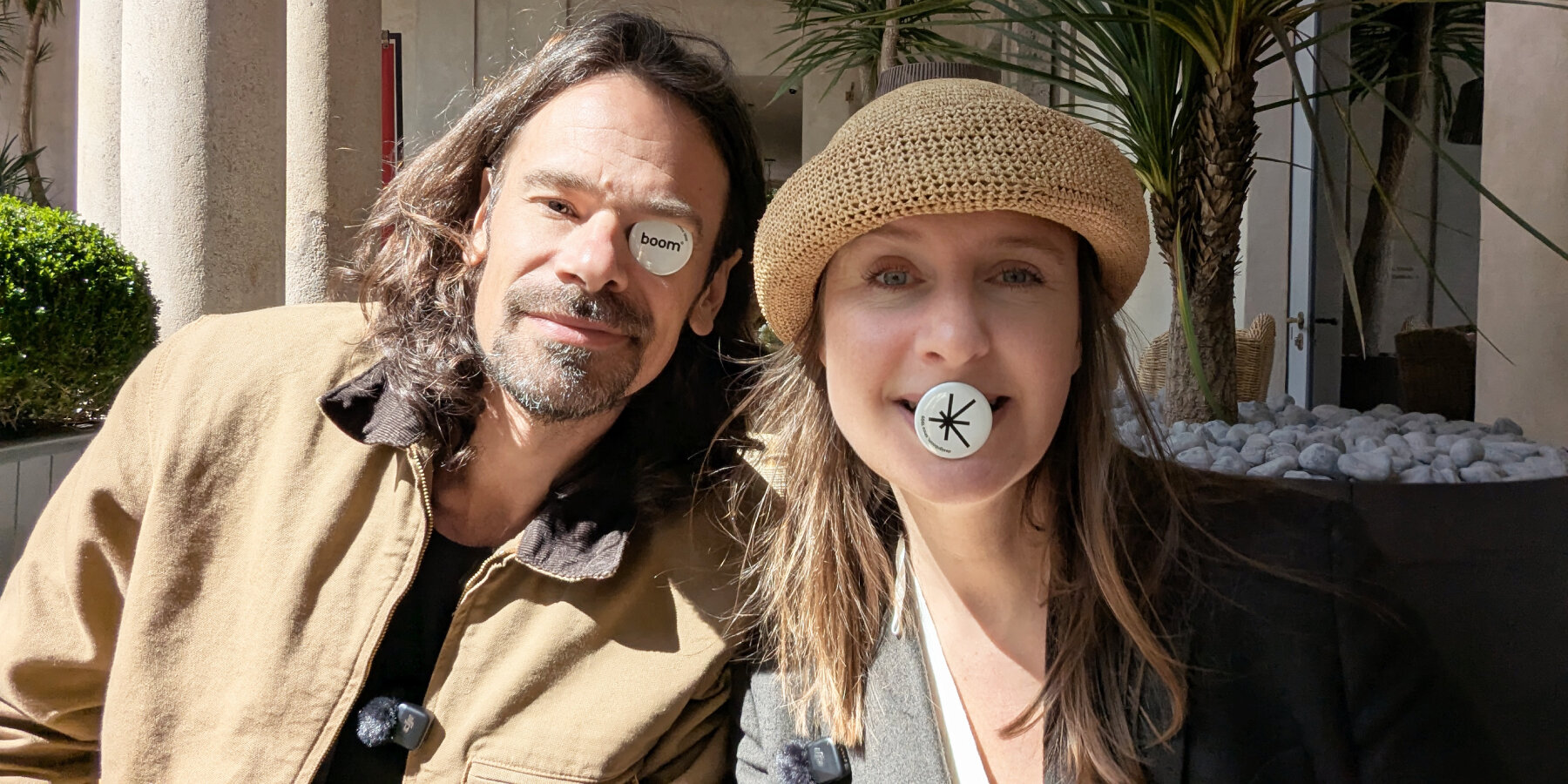
Ralph Nauta and Lonneke Gordijn | image © designboom
project info:
name: Drift Us at Audi House of Progress
artist: DRIFT | @studio.drift
event: Milan Design Week 2025
location: Portrait Milano Hotel, Corso Venezia 11 (main entrance) or via S. Andrea, 10 (side entrance)
on view: April 7th to 13th, 2025
photography: © Ronald Smits, © designboom
